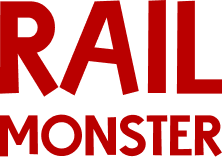Which Train to Choose: KTX or SRT?
When traveling in South Korea, the choice between the KTX (Korea Train Express) and SRT (Super Rapid Train) can be overwhelming. Both provide high-speed services, but each offers different benefits, routes, prices, and experiences. In this post, we’ll compare the key differences to help you decide which one suits your travel needs best. This Korea train comparison will highlight the important factors to consider before making your choice.
Last update: 20.06.2025
Speed and Travel Time
Speed and Travel Time
KXT(Korea Train Express)
Reaches speeds of up to 305 km/h (190 mph), making it the fastest option for many intercity routes. The travel time from Seoul to Busan is approximately 2 hours and 30 minutes, making it an excellent choice for long-distance travel. The high-speed capabilities of KTX also allow for smoother and quicker arrivals, reducing time spent in transit. Additionally, KTX operates at higher speeds on selected routes, giving passengers a faster travel experience. This can be a key benefit for travelers who need to maximize their time in each destination.
Routes and Stations Served
Routes and Stations Served
KXT(Korea Train Express)
KTX connects Seoul, Busan, Gwangju, Daegu, and Ulsan with additional stops at various other cities, including Jeonju and Daejeon. With its extensive network, KTX is the preferred option for those looking to visit multiple cities across South Korea. You’ll find KTX stations at major transport hubs, such as Seoul Station and Busan Station, making it easily accessible from most areas. The wide coverage also allows KTX to serve more travelers across different regions, especially those who plan to travel across South Korea.The option to explore a larger variety of destinations is a significant advantage for tourists.
If you’re looking to maximize your time and travel as quickly as possible, KTX is your best bet for routes with the highest speed, especially for longer trips. However, if you're traveling Seoul to Busan, both KTX and SRT offer similar travel times, so you can opt for the more affordable SRT without sacrificing much in speed. For peak periods, booking your ticket early ensures you secure the best seats, as both trains can get busy during holidays and weekends.
Price Comparison
Price Comparison
KXT(Korea Train Express)
Onboard Comfort and Amenities
Onboard Comfort and Amenities
KXT(Korea Train Express)
Offers more spacious seating with options for economy, first-class, and business. First-class passengers can enjoy larger seats, additional legroom, and more premium amenities. Passengers in KTX’s business class have access to power outlets, Wi-Fi, and enhanced meal options, making it ideal for those seeking a higher level of comfort. The overall onboard experience is tailored for passengers who prioritize comfort and luxury, especially on longer trips. For those who prefer a more relaxed environment, KTX provides ample space and personal comfort.
Ticket Booking and Availability
Ticket Booking and Availability
KXT(Korea Train Express)
Tickets can be purchased at Seoul Station, Busan Station, or other major stations, as well as online. You can also book tickets through the official KTX app or various third-party booking platforms. The booking process is user-friendly, allowing you to select your seats and class of service in advance. It’s advisable to book early, especially during busy travel seasons, as KTX trains tend to fill up quickly. With multiple ticket purchase options, booking tickets for KTX is quick and convenient for all passengers.
Both KTX and SRT provide excellent high-speed travel options across South Korea, each catering to different travel needs. KTX offers broader route coverage and is ideal for those traveling to various cities, offering a more premium experience with multiple class options. SRT, on the other hand, is a more budget-friendly choice, perfect for travelers focused on the Seoul-Busan route. The decision between the two ultimately depends on your preferences for speed, cost, and station convenience. Regardless of your choice, both trains offer a smooth, comfortable, and efficient way to explore South Korea.
